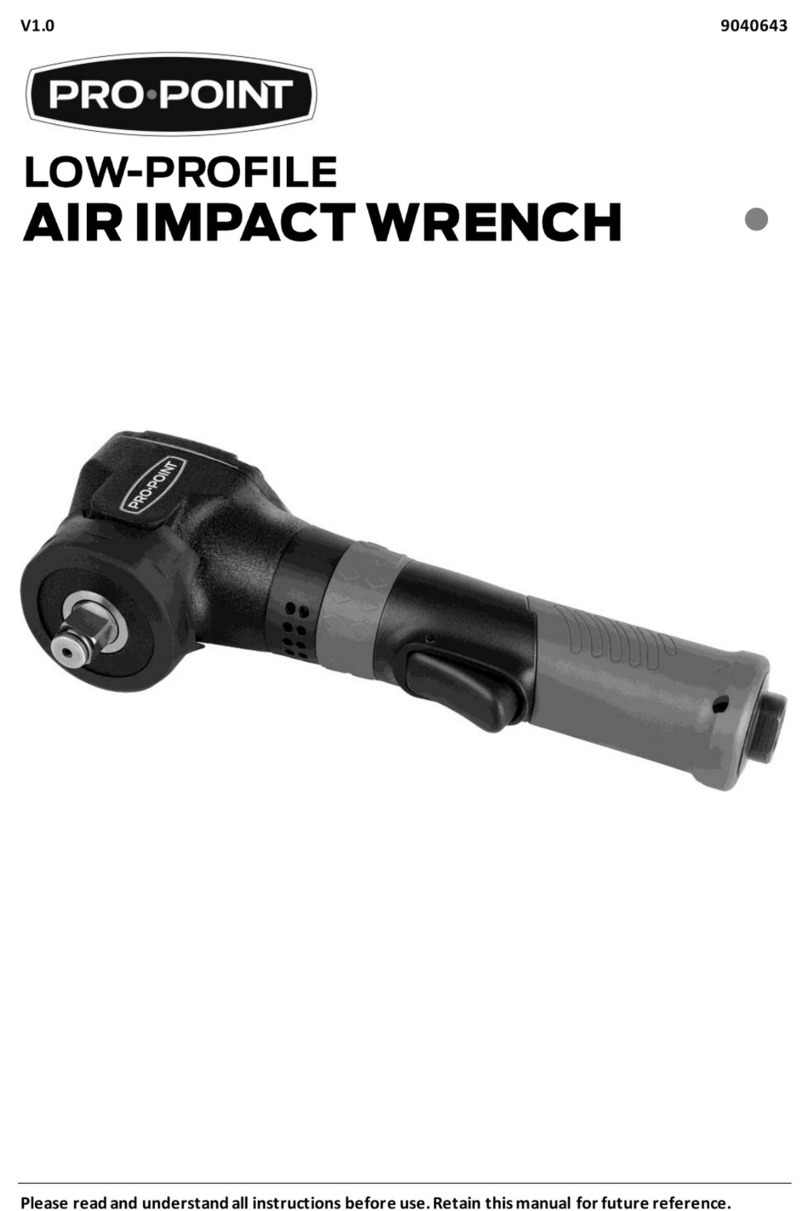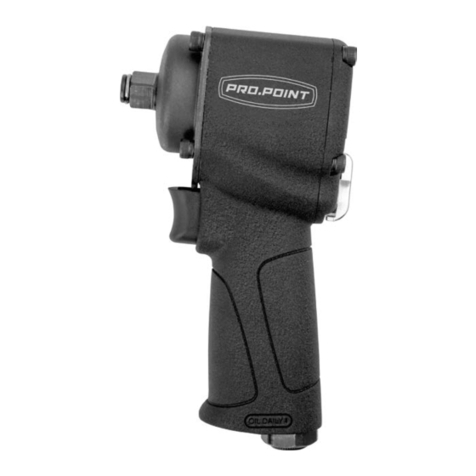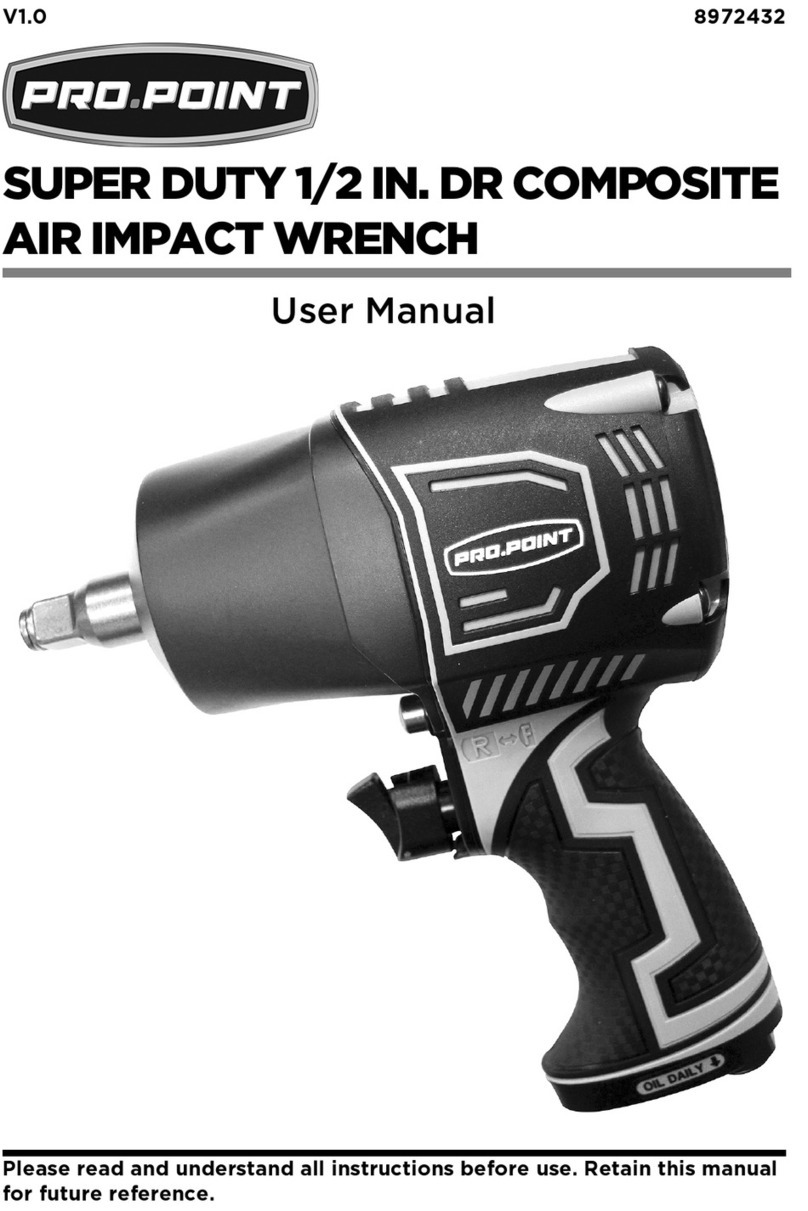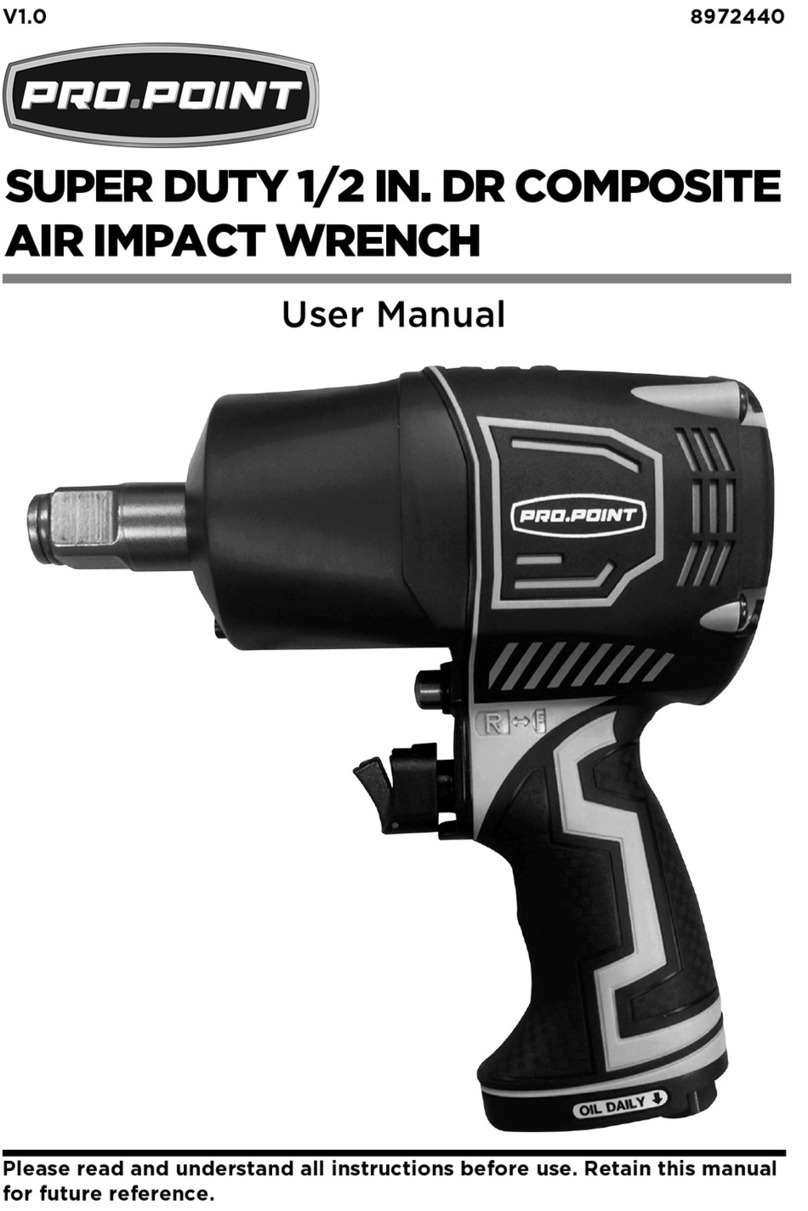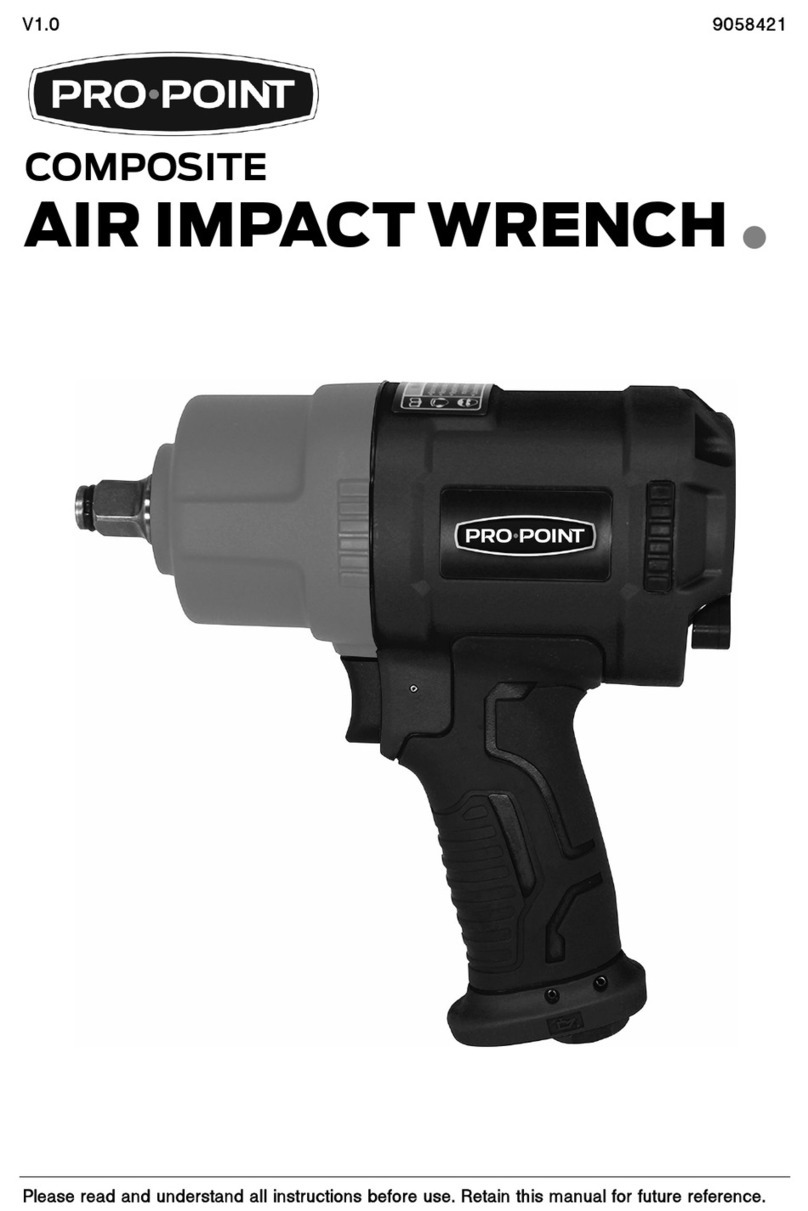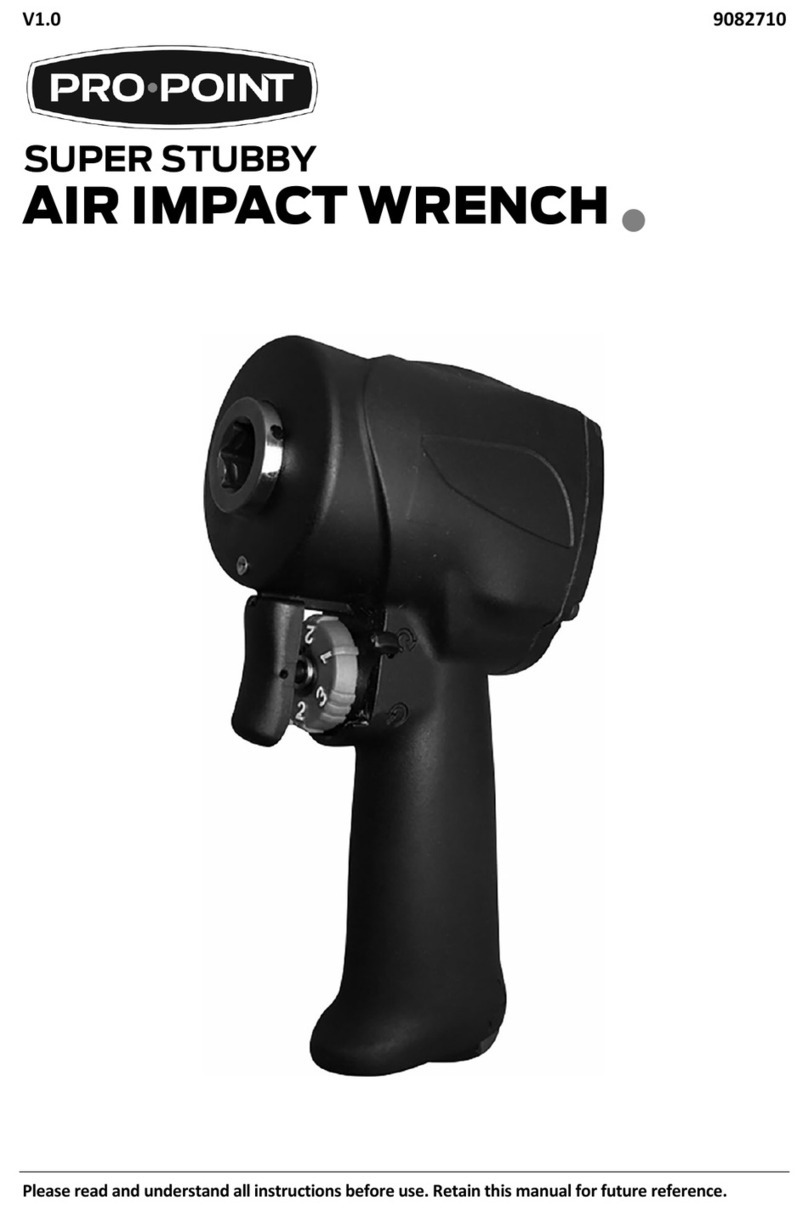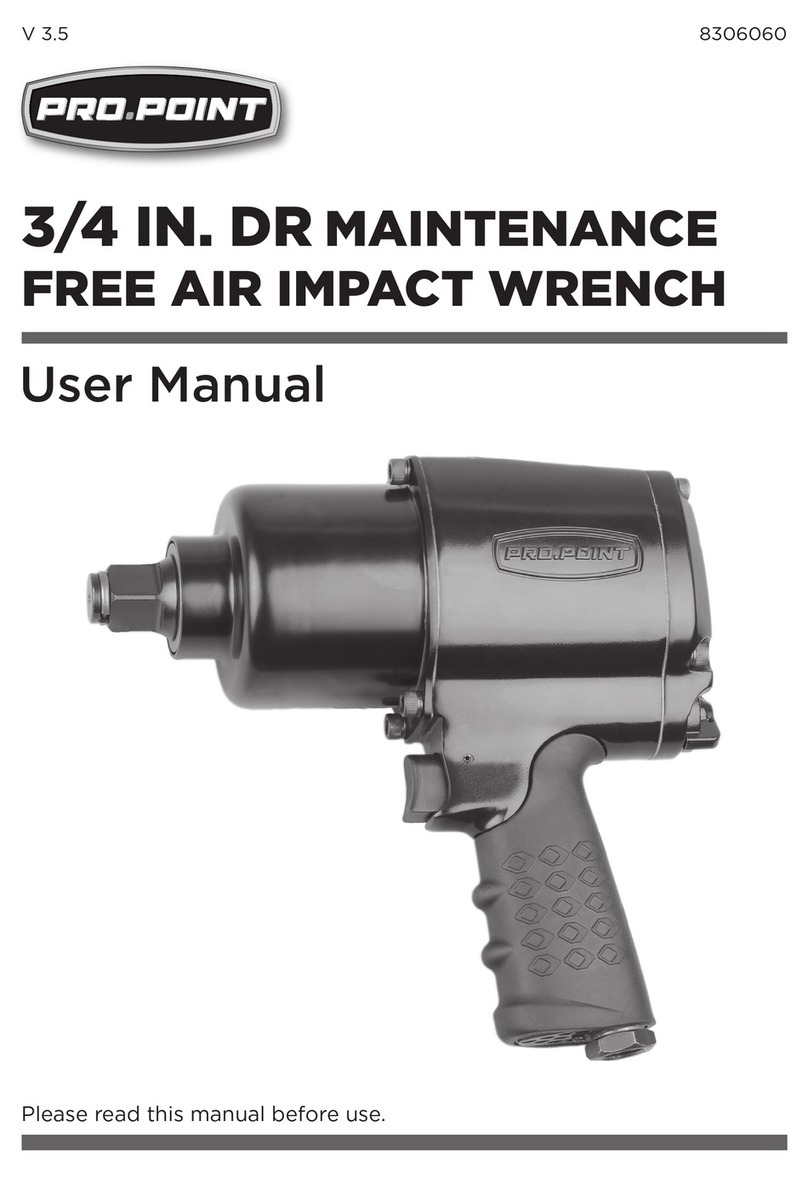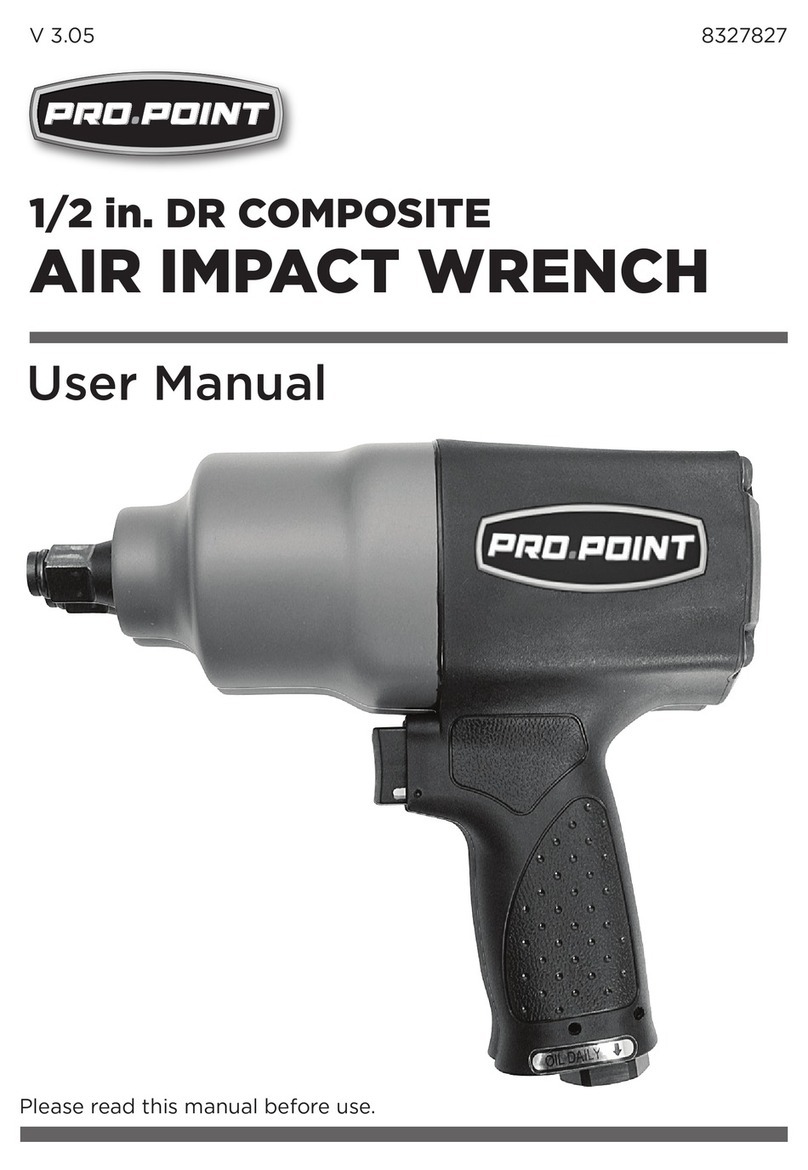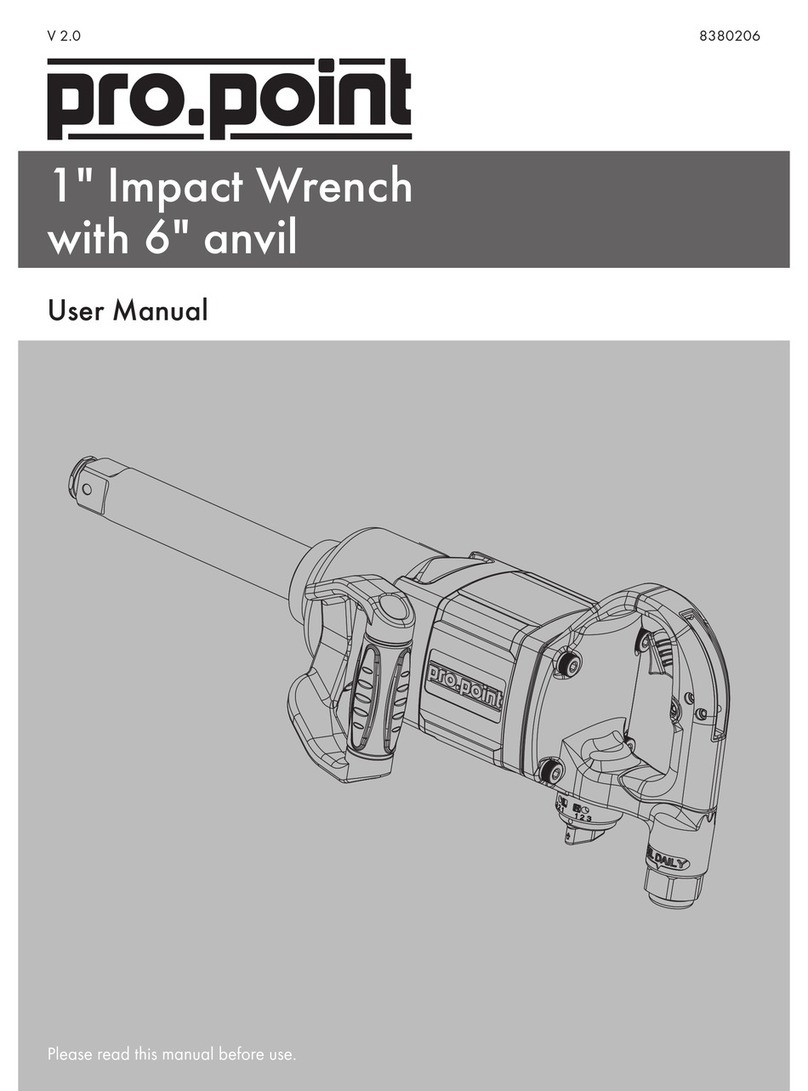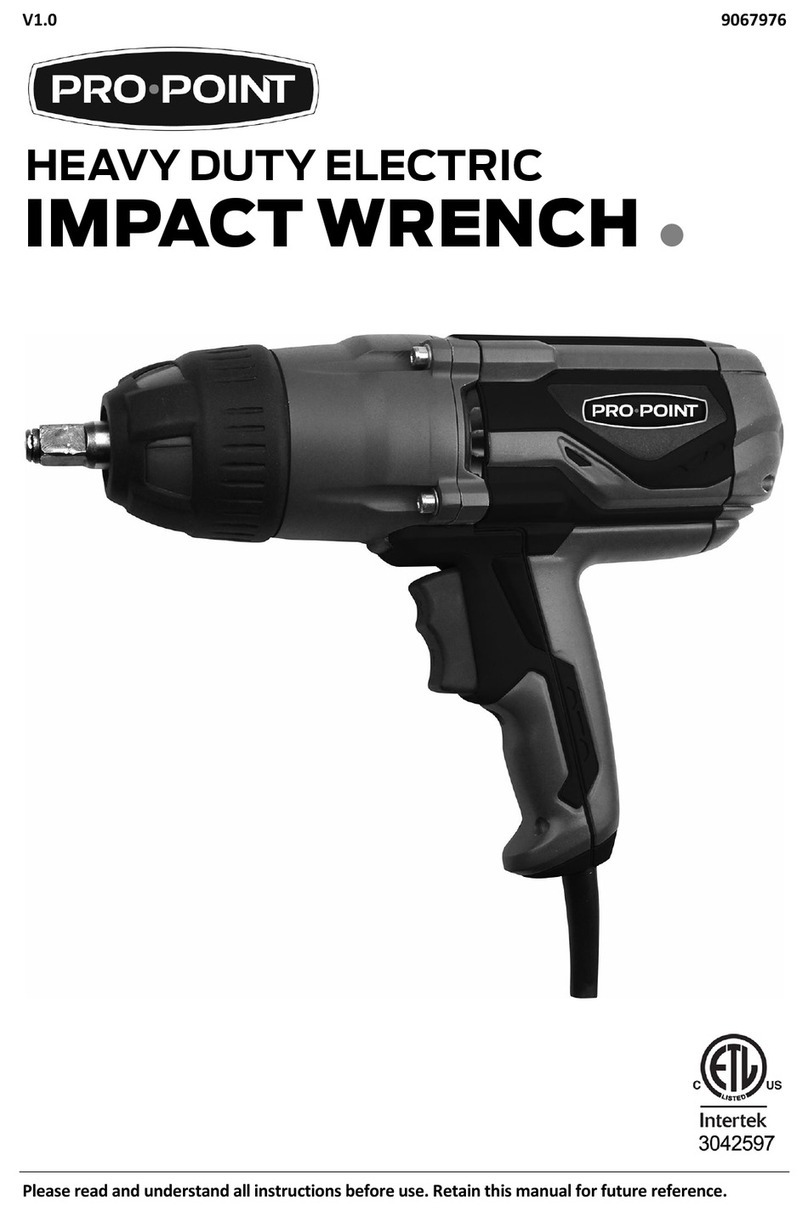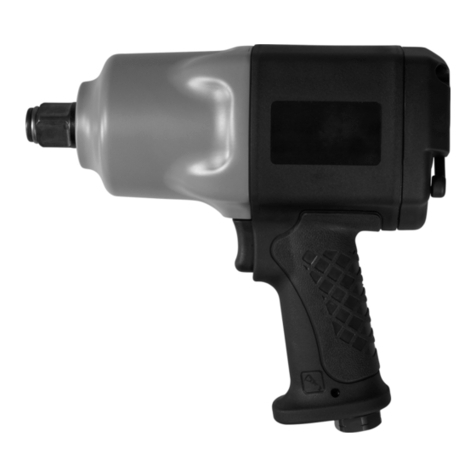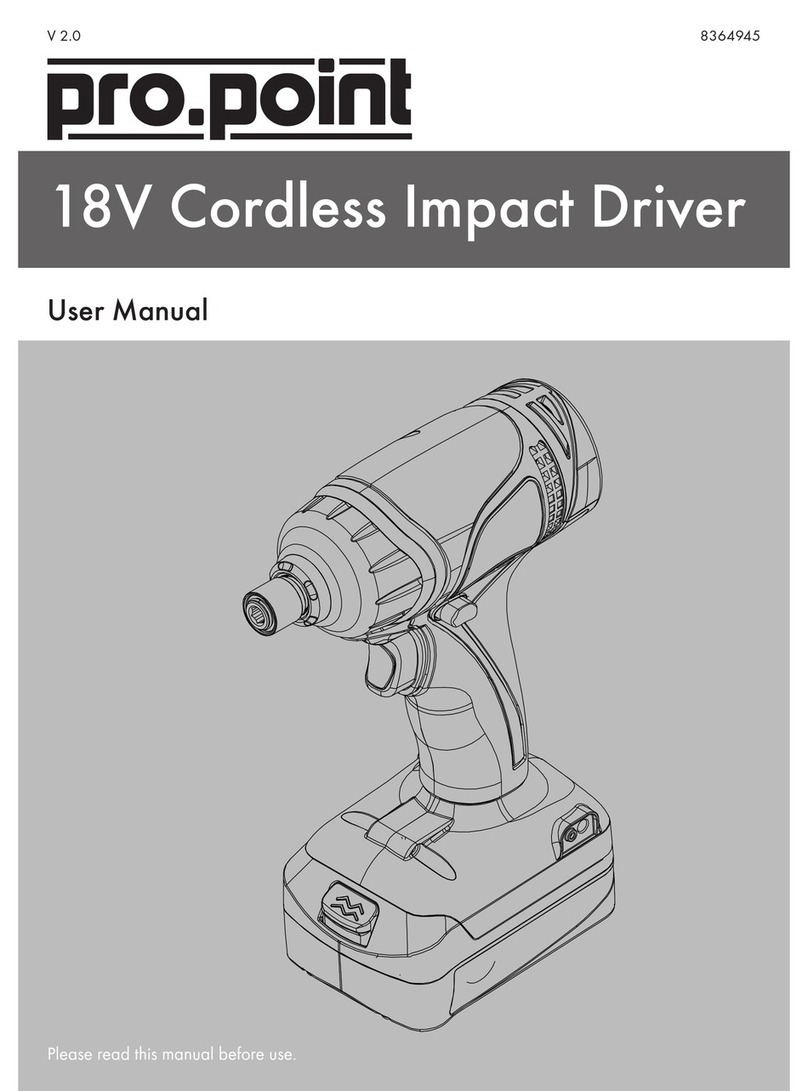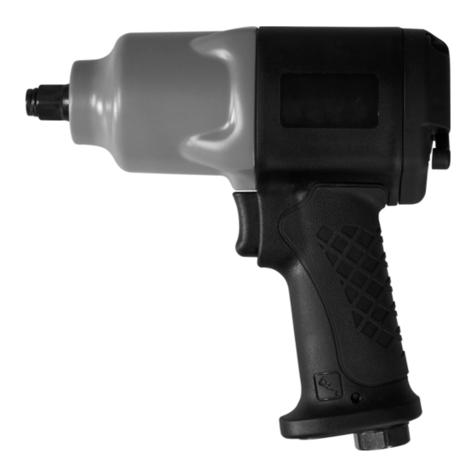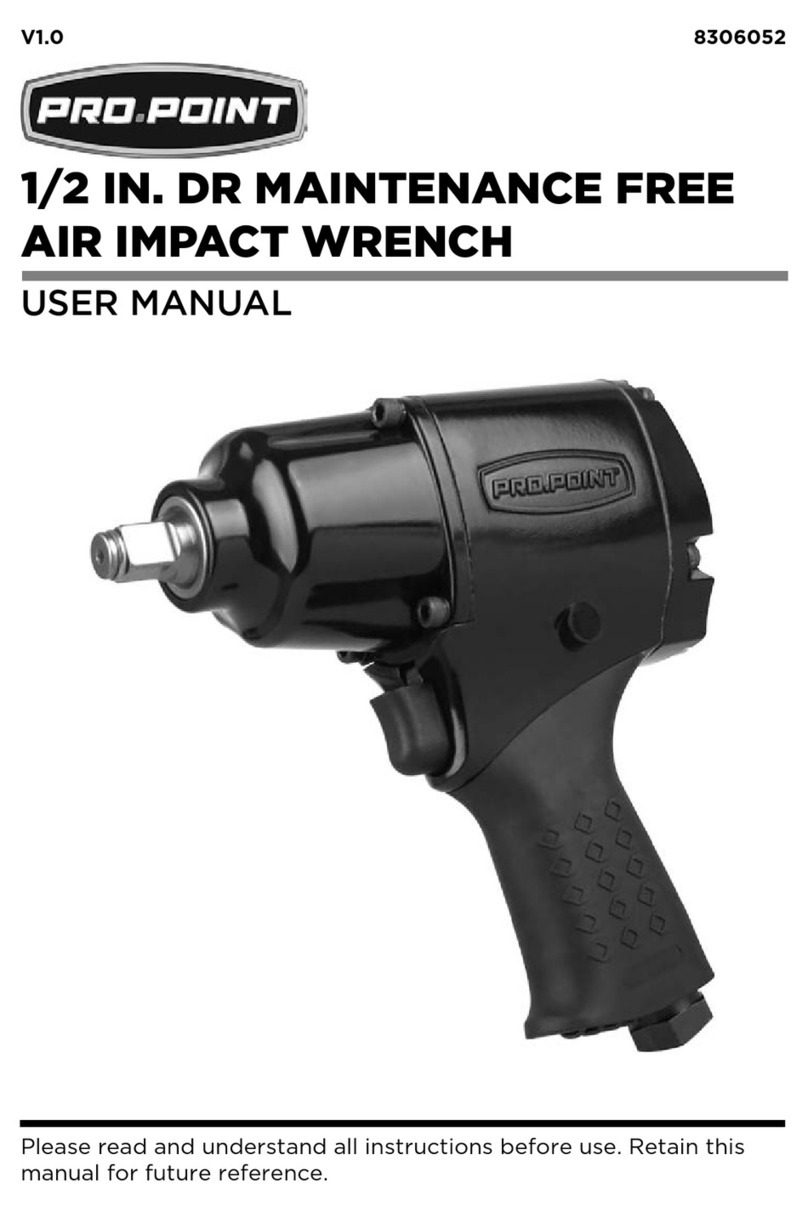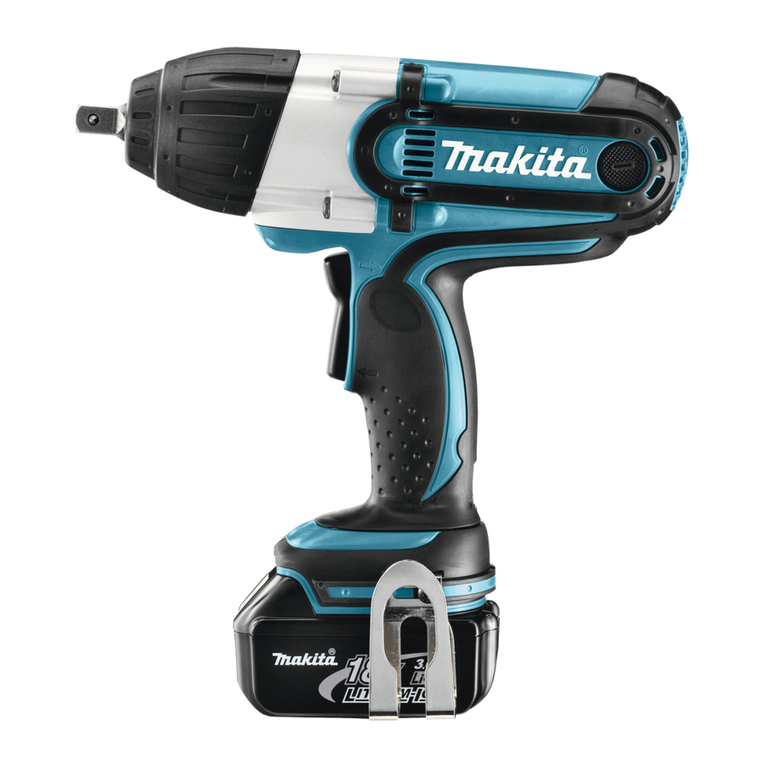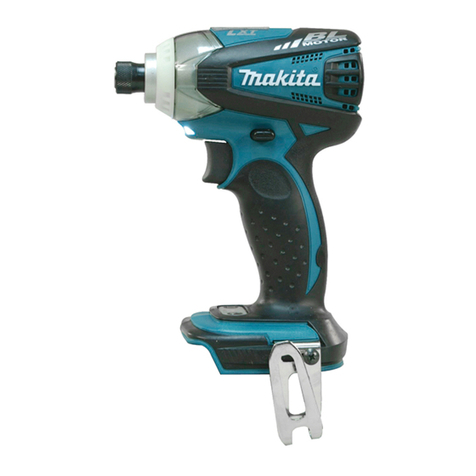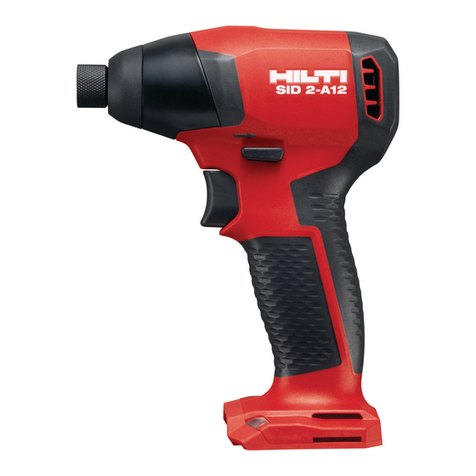1/2 IN. DR ELECTRIC IMPACT WRENCH
Visit www.princessauto.com for more information 5
8340507 V 3.03
ELECTRICAL SAFETY
1. Disconnect power supply. Disconnect the tool from the power
supply when not in use, before cleaning, servicing, or changing any
parts or accessories.
2. Protect yourself against electric shocks when working on electrical
equipment. Avoid body contact with grounded surfaces such as
pipes, radiators, cooking stoves, and refrigerators. There is an
increased chance of electrical shock if your body is grounded.
3. Double insulated tools are equipped with a polarized plug (one
blade is wider than the other). This plug will fit in a polarized outlet
only one way. If the plug does not fully fit in the outlet, reverse the
plug. If it still does not fit, contact a qualified electrician to install
a polarized outlet. Do not change the plug in any way. Double
insulation eliminates the need for a three-wire grounded power
cord and grounded power supply system.
4. Grounded tools must be plugged into an outlet that is properly
installed and grounded in accordance with all codes and
ordinances. Never remove the grounding prong or modify the plug
in any way. Do not use any adapter plugs. Check with a qualified
electrician if you are in doubt as to whether the outlet is properly
grounded. If the tool should electronically malfunction or break
down, grounding provides a low resistance path to carry electricity
away from the user.
5. Do not abuse the cord. Never use the cord to carry tools or pull
the plug from an outlet. Keep the cord away from heat, oil, sharp
edges, or moving parts. Do not operate this tool if the power
cord is frayed or damaged. Replace damaged cords immediately.
Damaged cords increase the risk of electric shock. Do not modify
the plug in any way.
6. When operating a power tool outside, use an outdoor extension
cord marked “W-A” or “W”. These cords are rated for outdoor use
and reduce the risk of electric shock. Use in conjunction with a
Ground Fault Circuit Interrupter (GFCI). If operating a power tool in
a damp location is unavoidable, the use of a GFCI reduces the risk
of electric shock. It is recommended that the GFCI should have a
rated residual current of 30 A or less.
7. Avoid using an unnecessarily long extension cord. Choose a cord
that is appropriate for the situation. A cord that is too long and
running across the floor can be more dangerous than helpful. Using
a cord that is too long or too thin could damage the tool. Unroll the
cord completely to prevent it from overheating.
8. Place the electrical cord in a position that prevents it from coming
into contact with the tool and from getting caught by the work
piece. The cord should always stay behind the tool.
